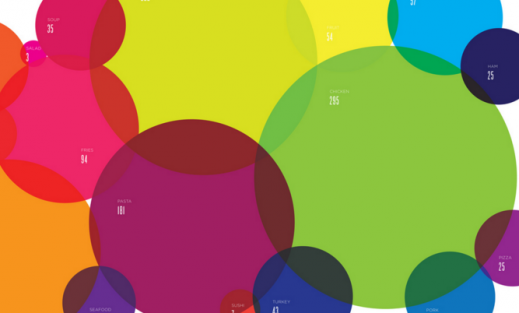Getting laid off is not always a bad thing for a journalist. In the case of Manuel Benito Ingelmo, it created an opportunity for him to develop something he had been thinking about for a long time.
Benito Ingelmo was a business journalist in Salamanca, Spain, with an interest in statistics and data visualization. He felt that print newspapers were definitely on the way out, he told me in an interview via Skype.
“I wanted to make the jump to a digital publication but I did not want to do the same thing as we were doing on paper.”
So when he was laid off from a small daily in 2012, he took his severance package and began to experiment with how to take advantage of the strengths of digital media — interactivity, instantaneous publication, potential massive audience — to create a journalistic product or service that would build on databases that were already available.
He and a handful of partners started out by giving away simple graphics on unemployment to media organizations. His idea was that these organizations could use these graphics instead of stock photos of people in unemployment lines. “In just two or three months, we reached 100 media organizations throughout Spain. We found that there was a market niche, the possibility to sell something. Then we had the problem of how much to charge for the service.”
The partners decided to offer media organizations subscriptions to a simple tool that they could use to create their own graphics quickly, with data specific to their province or town, culled from government databases. They called the service Porcentual. They did not want to compete with the big newsrooms that had their own graphic artists and data visualization specialists. Rather they offered their service to television stations and print media that wanted something visually different to illustrate their stories.
Gradual growth
In the first years, Benito Ingelmo and his partners invested €12.000 (about US$13,400) to develop the business. He worked from home; his wife’s job and income were a big help.
Gradually, they gained subscribers. Among the first to sign on were a public relations news wire, PR Noticias, as well as some major names like La Razon and a media group called Prensa Iberica. Now Porcentual has more than 80 clients, including such major names as El Huffington Post and 20minutos (in the graphic below), La Opinion and Antena 3 Noticias.
In the first nine months of 2015, Porcentual has already generated 170 percent more revenue than it did in all of 2014, Benito Ingelmo said. He did not want specific figures published, but he and one of the partners are collecting a salary and contract with programmers to build the digital tools.
Subscription rates are based on the number of views that each graphic receives in the client’s website or app, as tracked by analytics. Sixty percent of the clients are paying €120 a quarter (US$135) for 50,000 views. In the top category, 20 percent are paying €150 a quarter (US$170) for 100,000 views. For some clients with greater traffic numbers, he negotiates special rates, which of course are higher.
Graphics tailored to local audiences
The graphics and widgets that Porcentual’s clients insert in their pages are updated automatically from government databases on the economy, unemployment andelection results. The graphic at right shows the Sept. 27 vote for the provincial parliament in Catalonia, by political party. The columns at right show how the city of Cadaques voted.
On election night Sept. 27, Porcentual’s graphics received more than 3 million views, Benito Ingelmo said.
More clients, lower rates
For other journalists who want to create their own media, Benito Ingelmo, 41, offers this advice:
“You have to understand your market and who your client is.” For him, the clients are intermediaries, such as business groups and news media. “You have to understand the niche and minimize costs. You have to look for synergies.”
He believes that the best business model is one that has many clients paying lower rates rather than a few clients paying higher rates. With the latter model, “when the day comes that you lose a client, it’s a disaster. We put our confidence in the model of micropayments.”
“Not everybody can be Bill Gates,” he added. “But between Bill Gates and failure, there are lots of possibilities for earning a decent living.”
James Breiner (@jamesbreiner) is a Knight International Journalism Fellow and created Latin America’s first digital journalism center at the University of Guadalajara. For two years, James was the director of the master’s program in Global Business Journalism at Tsinghua University in Beijing. James now writes for his blog, News Entrepreneurs, and is a visiting professor of communication and digital art at Tecnológico de Monterrey in Mexico.
 This post originally appeared on the International Journalists’ Network. IJNet delivers the latest on global media innovation, news apps and tools, training opportunities and expert advice for professional and citizen journalists worldwide. Produced by the International Center for Journalists, IJNet follows the shifting journalism scene from a global perspective in seven languages – Arabic, Chinese, English, Persian, Portuguese, Russian and Spanish. Follow along on Twitter, Facebook or with IJNet’s free weekly newsletter.
This post originally appeared on the International Journalists’ Network. IJNet delivers the latest on global media innovation, news apps and tools, training opportunities and expert advice for professional and citizen journalists worldwide. Produced by the International Center for Journalists, IJNet follows the shifting journalism scene from a global perspective in seven languages – Arabic, Chinese, English, Persian, Portuguese, Russian and Spanish. Follow along on Twitter, Facebook or with IJNet’s free weekly newsletter.



